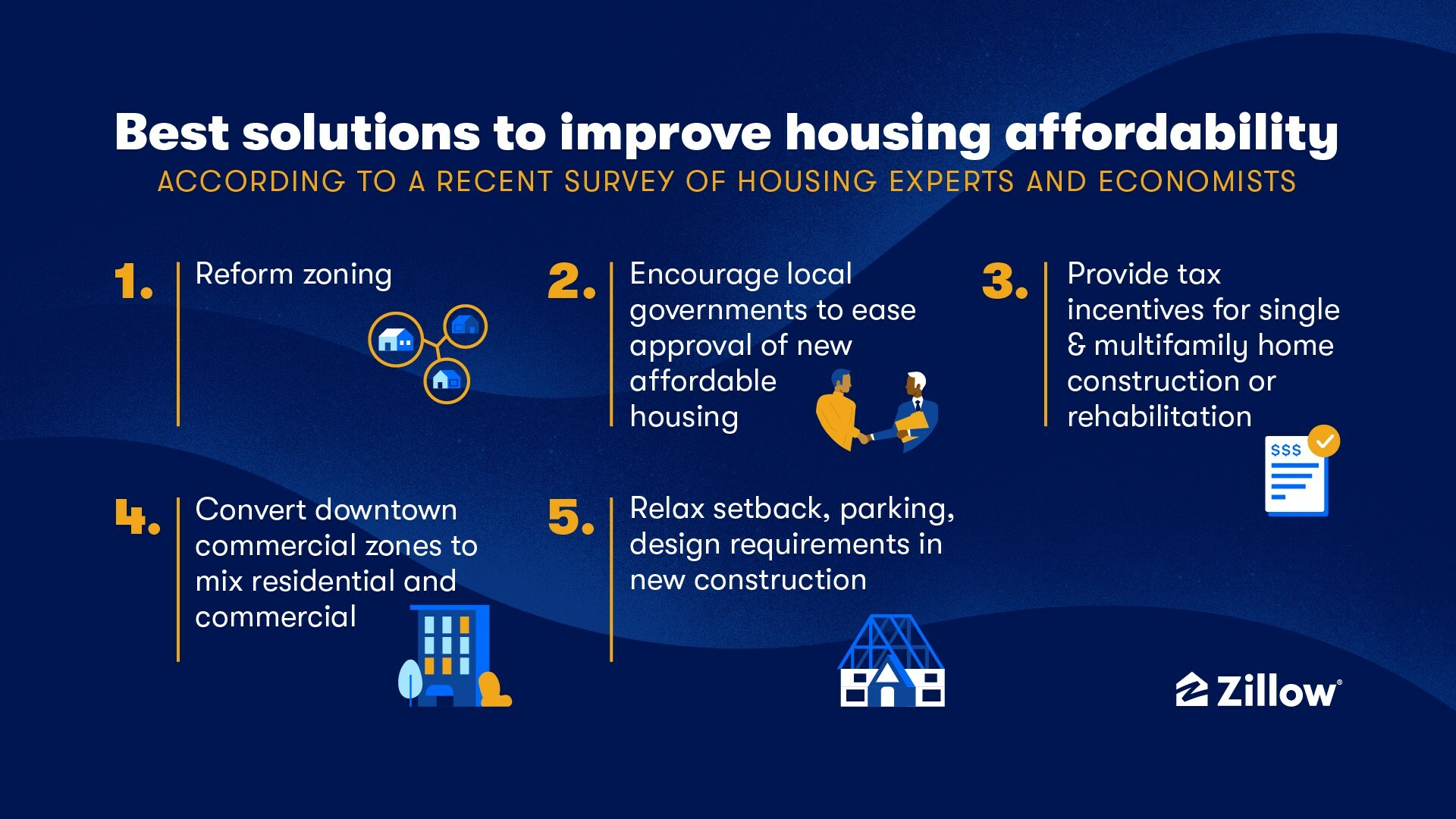 Zoning is one of the most contentious issues in many jurisdictions across the country, no matter how big or small, but one thing zoning officials should be considering is ways to address the ongoing affordability crisis in creative ways that benefit municipalities and its residents alike.
Zoning is one of the most contentious issues in many jurisdictions across the country, no matter how big or small, but one thing zoning officials should be considering is ways to address the ongoing affordability crisis in creative ways that benefit municipalities and its residents alike.
This information comes by way of Zillow’s Home Price Expectations Survey which polled 117 highly-placed housing market executives and economists in December 2022.
Of those surveyed, zoning reform was an overwhelmingly popular answer to create more opportunities in existing and new neighborhoods in growing communities to effectively address affordability.
In addition, encouraging local governments to support and not deny affordable housing initiatives in zoning in the form of tax credits plays a big part in creating an image of opportunity for what some would call “low-income” housing.
"It seems straightforward: We need to build more homes," said Dr. Skylar Olsen, Zillow's Chief Economist. "Changes through policies like modest densification will give us more 'at bats' to create density and help communities stay livable for everyone. Without a huge injection of new homes in the near future, affordability will continue to be a challenge for many—especially for first-time home buyers."

The affordability of housing is considered by Zillow to be a defining feature of the current real estate market. Their latest data shows that monthly mortgage costs are just under $1,600 for an average home, given a 20% down payment. This number is 46% higher than January 2022 and $754 higher than before the pandemic.
According to a study from Up for Growth, one of the key drivers of unaffordability has been the chronic shortage of new housing construction—which to this day has not recovered from the Great Recession—resulting in a 3.79 million-unit gap in home production.
"Restrictive and exclusionary zoning, artificial barriers, and NIMBY opposition have combined to create an unprecedented and persistent housing shortage," said Mike Kingsella, CEO of Up for Growth. "Failure to address these issues will create lower economic output and fewer opportunities for everyone. Families and individuals will be forced to pay higher rents, the equity gap will widen, and transportation costs will rise as people are forced to travel greater distances for work and education."
Click here for the full report.

 DSNews The homepage of the servicing industry
DSNews The homepage of the servicing industry









